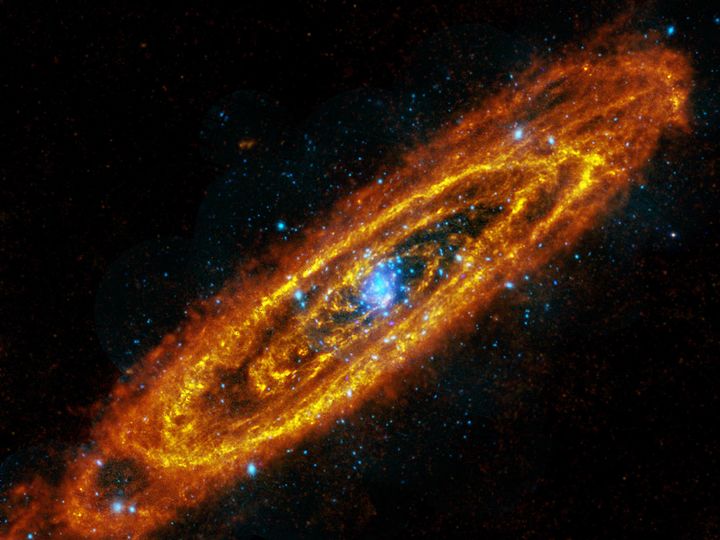The matter we can see around us makes up just 5% of space. The rest is made up of dark matter, an invisible substance, and dark energy, a force that pushes the universe apart and acts as a channel for dark matter and matter to interact.
Or so goes the theory.
In reality, it’s difficult to prove the existence of an unobservable matter.
But now scientists at NASA have lent weight to the theory with the discovery of mysterious signals at the heart of the neighbouring Andromeda galaxy.
The signals are gamma rays, the highest energy form of light, produced by the universe’s most energetic phenomena.
The data, observed by NASA’s Fermi gamma-ray telescope, suggests the rays are confined to the centre of the galaxy, rather than spread through it.
Why? Well, scientists think the emissions may come from several undetermined sources, one of which is suspected to be dark matter.

“We expect dark matter to accumulate in the innermost regions of the Milky Way and other galaxies, which is why finding such a compact signal is very exciting,” said lead scientist Pierrick Martin, an astrophysicist at the National Center for Scientific Research and the Research Institute in Astrophysics and Planetology in Toulouse, France.
It’s not the first time scientists have observed such signals. Fermi also spotted a similar distribution of gamma rays at the heart of our Milky Way galaxy.
The discovery raises hopes that scientists will now be able to compare our galaxy and Andromeda with greater accuracy.
“Our galaxy is so similar to Andromeda, it really helps us to be able to study it, because we can learn more about our galaxy and its formation,” said co-author Regina Caputo, a research scientist at NASA’s Goddard Space Flight Center in Greenbelt, Maryland.
While the scientists still need more observations to identify the source of the rays, they are hopeful that the data will serve as a starting point.
We still have a lot to learn about the gamma-ray sky,” Caputo said. “The more information we have, the more information we can put into models of our own galaxy.”
